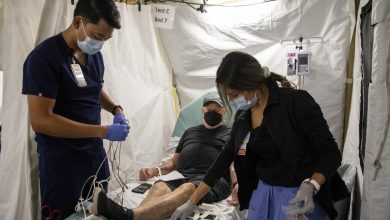New anti-ageing therapy extends life of mice by 25%, study finds

Based on the same science that allows axolotl salamanders to regenerate amputated limbs, a medication based on this discovery could extend the life of mice by 25%, according to the most recent anti-aging study.
The method, which includes inhibiting a pro-inflammatory protein, is being tested on humans for fibrotic lung disease and shields the rodents from several diseases.
The findings raise expectations that our growing knowledge of the functions of certain genes and proteins may contribute to an increase in human lifespan and healthspan, or years of healthy life.
“We have discovered a pro-inflammatory factor that promotes aging in its widest meaning,” stated Stuart Cook, the principal researcher and professor at the MRC Laboratory of Medical Sciences in the UK and Duke-NUS Singapore. It has been discovered that blocking this element lengthens longevity as well as healthspan. There is a domino effect.
The new study, which was published on Wednesday in Nature, focuses on how the protein IL-11 promotes inflammation. The researchers discovered that aged mice had higher levels of this protein.
The study demonstrated that deleting the genes that control the synthesis of IL-11 shielded the mice against a variety of diseases, metabolic deterioration, and frailty. Thus, the rodents were able to live an average of 24.9% longer.
Mice in their middle years showed a similar increase in lifespan when IL-11 was blocked by an antibody. Males who were 75 weeks old, or around 55 years old in human years, lived 22.5 percent longer than females, who lived 25 percent longer.
According to the researchers, inhibition of IL-11 seemed to reduce the incidence of age-related malignancies, supporting earlier theories.
Although data from human trials were not included in the study, Cook expressed confidence that positive anti-aging effects would be seen in humans.
The scientific community has long been interested in IL-11 due to its part in certain species’ remarkable regeneration processes. Previous studies have shown that it aids in the restoration of missing fins, tails, and limbs in fish, tadpoles, and axolotls.
The protein is necessary for human body growth, but since people live longer than they did in the past, it is becoming a bigger issue for adults. Cook likened the process of aging caused by IL-11 to “putting petrol on a fire.”
The study broadens the range of effective anti-aging methods. The removal of aging cells, or “senolytics,” is another topic of research.
The results of the Cook team’s study appeared “solid,” however Ilaria Bellantuono, a Sheffield University professor of musculoskeletal aging, noted that the suggested treatments did not always seem to be better than senolytics.
Furthermore, Bellantuono stated, “there is no evidence that it would work in advanced age, when deficits are more prominent.”
More information on these anti-aging methods must come from human trials, and even if they are successful, there will be challenges in implementing treatments. It can be challenging to determine who is susceptible to frailty, and regulators may not always recognize frailty as a medical condition for the purposes of covering prescription costs.




